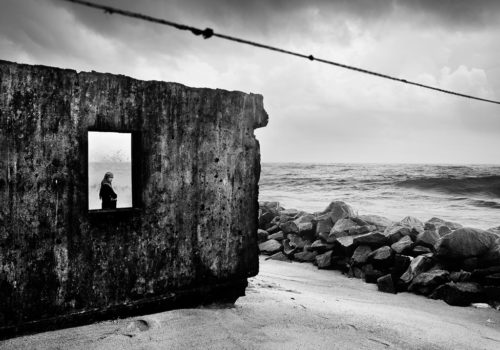Life in Troubled Waters
The natural wave pattern takes the sand from the east coast of India towards the north. Along the west coast, it mostly erodes sand towards the south. In small pockets, the direction is reversed. When there’s construction on the shore, it obstructs the natural soil movement, and that impacts the strength and size of the waves. To respond to stronger waves, more and more sea-walls and wave breakers are being built. Unfortunately, this is counter-productive as it creates more obstacles for the sea, and hence causes more erosion. In India, there are 480 seawalls and 204 groynes – a wall or jetty built out from a riverbank or seashore to control erosion. A total of 684, these translate to an average of about one structure to every 8-10 km on the coast of India. Approximately 300 settlements are blocked by seawalls. This has other repercussions too. Majority of the coastal fishing communities, particularly those practicing subsistence fishery, depend on the naturally available beach. They deploy seines – a fishing net that hangs vertically in the water with its bottom edge held down by weights and its top edge buoyed by floats – from the shore as a beach seine. The beach is also prime space for habitation, parking of traditional fishing crafts, landing fish catches, drying fish, mending nets and other gear, and for certain fishing operations like the deployment of shore seines. By blocking or restricting access to the sea and other natural resources, fishermen lose space for all of these activities. The sea walls are built using huge stones. They are usually dumped on the shore haphazardly. So these walls are rarely stable. Every year, during the monsoons or cyclones, the stones are washed away. Take Ennore in Tamil Nadu or Ullal in Karnataka for example. Massive sea walls are built there frequently. But they are of no use when the sea gets wild. Houses, schools, and buildings are still being devoured by the sea every year.The obvious blindspot is that the problem of erosion is dealt with in complete isolation of its root cause: disruption of the littoral caused by the harbour.
Selvaprakash Lakashmanan, is a Freelance photographer based out of Bangalore,India. He started his career in photography as a photographer in newspaper.
He took part in the Angkor Photography Festival, and also won the Paris Match Award in 2007. He was awarded a fellowship to attend the TPW Changing Idea Workshop.In 2008, he won the India Press Photo Award, participated and exhibited images at the PourIInstant 15th Young Visual Artist Residency Programme in Niort-France.His works were exhibited at the 2008 World photojournalism festival (ChinaTOPS), Singapore International Photo Festival 2008 (SIPF), Angkor Photo festival( Projection) 2010 and Photovisa International Photo festival, Russia 2010, Noorderlicht International Photo festival 2011, Delhi Photo Festival 2011 and Lagos Photo Festival 2011.He was the Grant Prix Winner at the MAN AND SEA Photography Competition at the II International Festival of Photography Photovisa in Krasnodar, Russia 2010, and his works were displayed at the San Francisco Art Commission Gallery.
He won the Robert Bosch Art Grant 2009-2010, and the NFI National Media fellowship 2011-2012.His photographs have been published in The New York Times, NYT Lens Blog, Outlook Traveler, OPEN, Asian Geo, New Internationalist, and several leading newspapers and magazines in India.
















